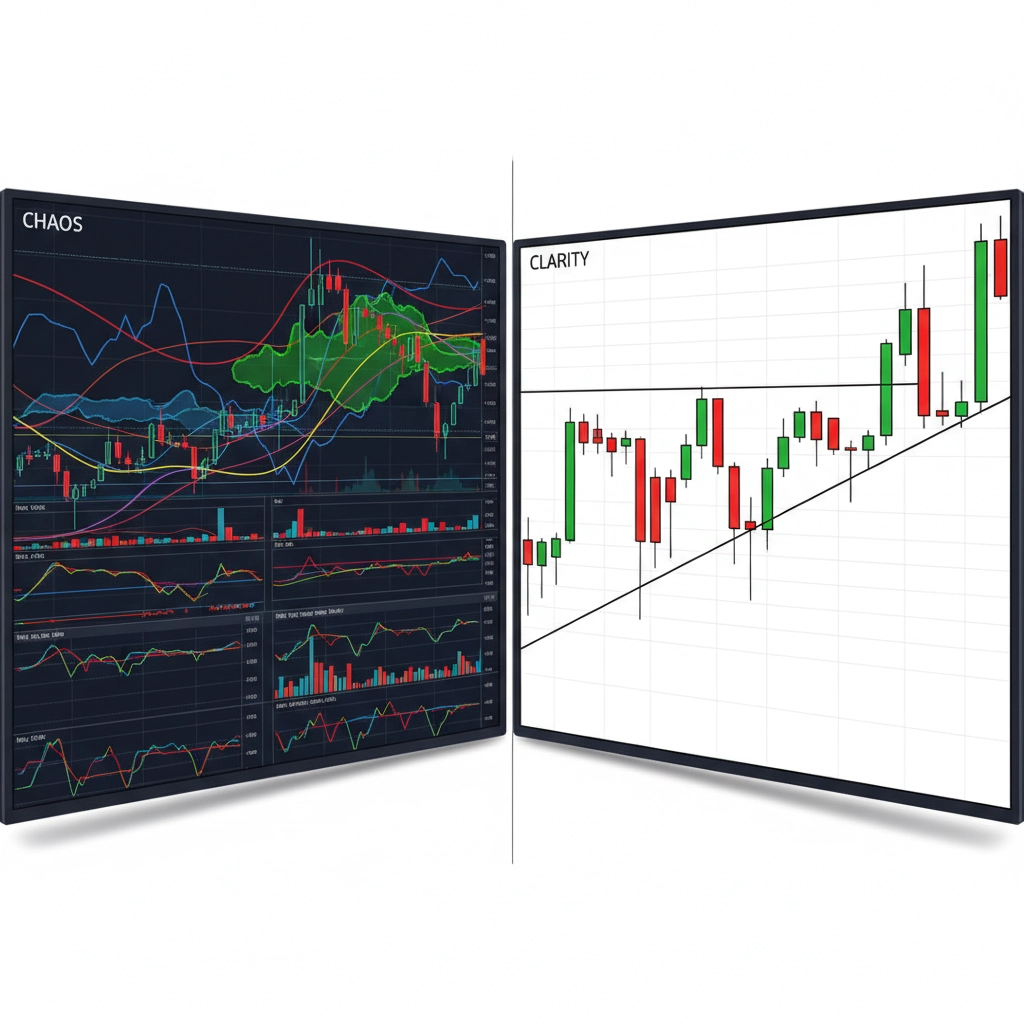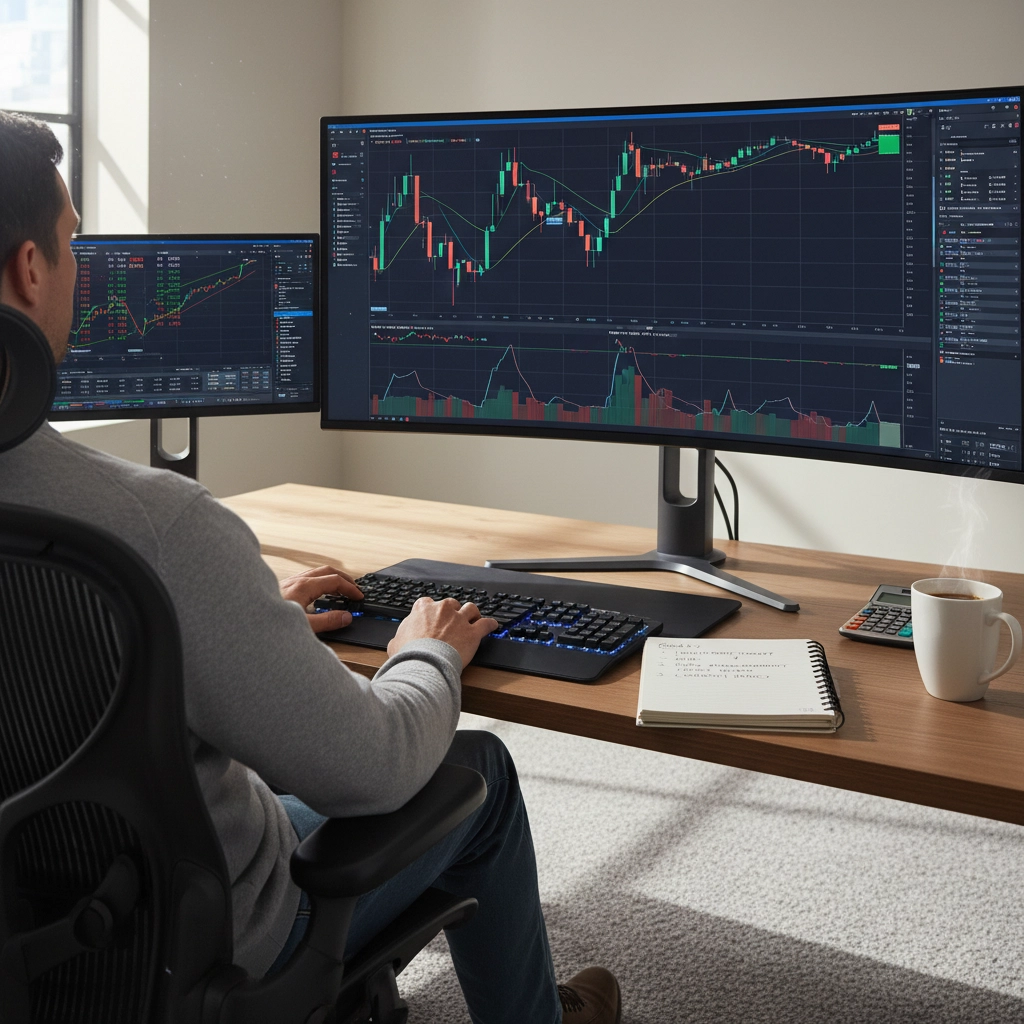Choosing the right trading course can make or break your journey to becoming a profitable trader. Yet, most aspiring traders make the same costly mistakes when selecting their education, mistakes that waste time, money, and often lead to frustration and giving up altogether.
If you’re feeling overwhelmed by the endless options out there, you’re not alone. The trading education industry is saturated with courses, mentors, and “gurus” all promising to make you rich. But here’s the thing: not all trading courses are created equal, and what works for one person might be completely wrong for another.
Let’s dive into the seven biggest mistakes people make when choosing trading courses, and more importantly, how you can avoid them.
Mistake #1: Taking Multiple Courses Without Real Progress
This is perhaps the most common trap new traders fall into. You might recognise this pattern: enrolling in course after course, collecting certificates, memorising setups, and being able to explain every technical indicator under the sun, yet your trading account isn’t growing.
Many traders suffer from what’s called the “illusion of progress.” They feel productive because they’re constantly learning, but they’re not actually improving their trading results. It’s like collecting recipe books but never actually cooking a meal.
How to Fix It:
Stop chasing more content and start mastering less. Choose one comprehensive course with a clear methodology and stick with it until you’ve genuinely mastered the concepts. Focus on quality over quantity, it’s better to deeply understand one trading strategy than to have surface-level knowledge of twenty.
Before moving on to another course, ask yourself: “Can I consistently execute the strategies from my current course profitably?” If the answer is no, you don’t need more courses; you need more practice.

Mistake #2: Focusing on Indicators Instead of Price Action
Too many courses overwhelm students with tools and indicators: RSI, MACD, Bollinger Bands, Fibonacci retracements, and dozens of chart patterns. Students spend months memorising these tools, only to find that they rarely align perfectly in live markets.
The problem is that many course creators focus on what looks impressive rather than what actually works. Fancy indicators might make for exciting marketing videos, but they often distract from the fundamental skill every trader needs: understanding how price actually moves.
How to Fix It:
Look for courses that teach you to read raw price action first. The best traders understand supply and demand dynamics and can read market sentiment from price movement alone. Indicators should be secondary tools that confirm what you already see in the price action, not the primary basis for your trading decisions.
When evaluating a course, ask: “Does this teach me to understand why price moves, or just when to buy and sell based on indicator signals?”
Mistake #3: Choosing Courses Without Clear Learning Objectives
Many people approach trading education like they’re browsing Netflix: they pick whatever looks interesting without a clear goal in mind. They might choose a day trading course when they actually want to swing trade, or pick a forex course when they’re more interested in stocks.
This scatter-gun approach leads to confusion and contradictory information. Different markets require different approaches, and different time frames demand different skills and mindsets.
How to Fix It:
Before you even start looking at courses, get crystal clear on your goals:
- What markets do you want to trade? (Forex, stocks, crypto, commodities?)
- What’s your preferred timeframe? (Scalping, day trading, swing trading, position trading?)
- How much time can you realistically dedicate to trading each day?
- What’s your risk tolerance and available capital?
Once you’ve answered these questions, look for courses that specifically address your situation. A course designed for someone wanting to day trade with £50,000 will be very different from one aimed at swing traders with £5,000.

Mistake #4: Falling for Flashy Marketing Over Substance
The trading education space is notorious for over-the-top marketing. Lamborghinis, mansion screenshots, promises of “easy money,” and claims of turning £1,000 into £100,000 in six months. These marketing tactics prey on people’s desire to get rich quickly.
Here’s the harsh truth: if trading were as easy as these ads suggest, everyone would be doing it successfully. The most effective traders often have the most boring marketing because they’re focused on education, not hype.
How to Fix It:
Look past the flashy marketing and examine the actual course content. Good courses will:
- Emphasise the risks and challenges of trading
- Focus on education rather than income promises
- Provide detailed course curriculums
- Offer realistic timelines for learning
- Include proper risk management training
Be immediately suspicious of any course that guarantees returns or suggests that trading is easy money. The best educators are honest about the challenges and work required to become consistently profitable.
Mistake #5: Ignoring the Instructor’s Track Record
Would you learn surgery from someone who’d never performed an operation? Of course not. Yet many people choose trading courses based on marketing rather than the instructor’s actual trading credentials and teaching experience.
Some course creators are excellent marketers but mediocre traders. Others might be profitable traders but terrible teachers. You need someone who’s both competent at trading and skilled at education.
How to Fix It:
Research your potential instructors thoroughly:
- What’s their actual trading background?
- How long have they been trading profitably?
- Do they provide verified trading results?
- What’s their teaching experience?
- Can you find independent reviews from past students?
Look for instructors who are transparent about their own trading journey, including their failures and lessons learned. The best teachers often share their mistakes as readily as their successes.

Mistake #6: Not Considering Ongoing Support and Community
Many people focus solely on the course content and forget about what happens after they finish watching the videos. Trading is a skill that requires ongoing refinement, and having access to continued support can make the difference between success and failure.
Some courses dump all the content on you upfront and then leave you to figure everything out alone. This approach works for some learners, but many people benefit from ongoing guidance, community interaction, and the ability to ask questions as they progress.
How to Fix It:
When evaluating courses, consider:
- Is there a community of fellow students you can learn from?
- Does the instructor provide ongoing support or Q&A sessions?
- Are there regular updates to keep the content current?
- Can you get feedback on your trading ideas or analysis?
At Samuel & Co Trading, we understand that learning doesn’t stop when the course ends. That’s why our programmes include ongoing mentorship and a community of like-minded traders who support each other’s growth.
Mistake #7: Picking Courses That Don’t Match Your Learning Style
People learn differently. Some are visual learners who need charts and diagrams. Others prefer hands-on experience. Some like detailed theoretical explanations, while others want to jump straight into practical application.
Many courses use a one-size-fits-all approach that works well for some learning styles but leaves others struggling. If the teaching method doesn’t match how you learn best, even excellent content will be hard to absorb.
How to Fix It:
Consider your learning preferences:
- Do you learn better from videos, written materials, or interactive sessions?
- Do you prefer theoretical foundations or practical examples?
- Are you comfortable learning online, or do you need in-person interaction?
- Do you like structured lessons or more flexible, self-paced learning?
Look for courses that offer multiple learning formats or find ones that specifically cater to your preferred learning style. Many quality programmes offer a mix of video content, written materials, live sessions, and practical exercises.
The Path Forward
Choosing the right trading course is an investment in your future, and like any investment, it deserves careful consideration. The goal isn’t just to learn about trading: it’s to develop the skills and mindset needed to trade profitably and consistently.
Remember, there’s no shortcut to trading success. The best courses provide a solid foundation, but the real learning happens when you start applying these concepts with real money in real markets. Choose wisely, commit fully to your chosen programme, and be prepared to put in the work required to master this challenging but rewarding skill.
The journey to becoming a consistently profitable trader isn’t easy, but with the right education and dedication, it’s absolutely achievable. Avoid these seven mistakes, and you’ll be well on your way to finding a course that truly accelerates your trading success.






